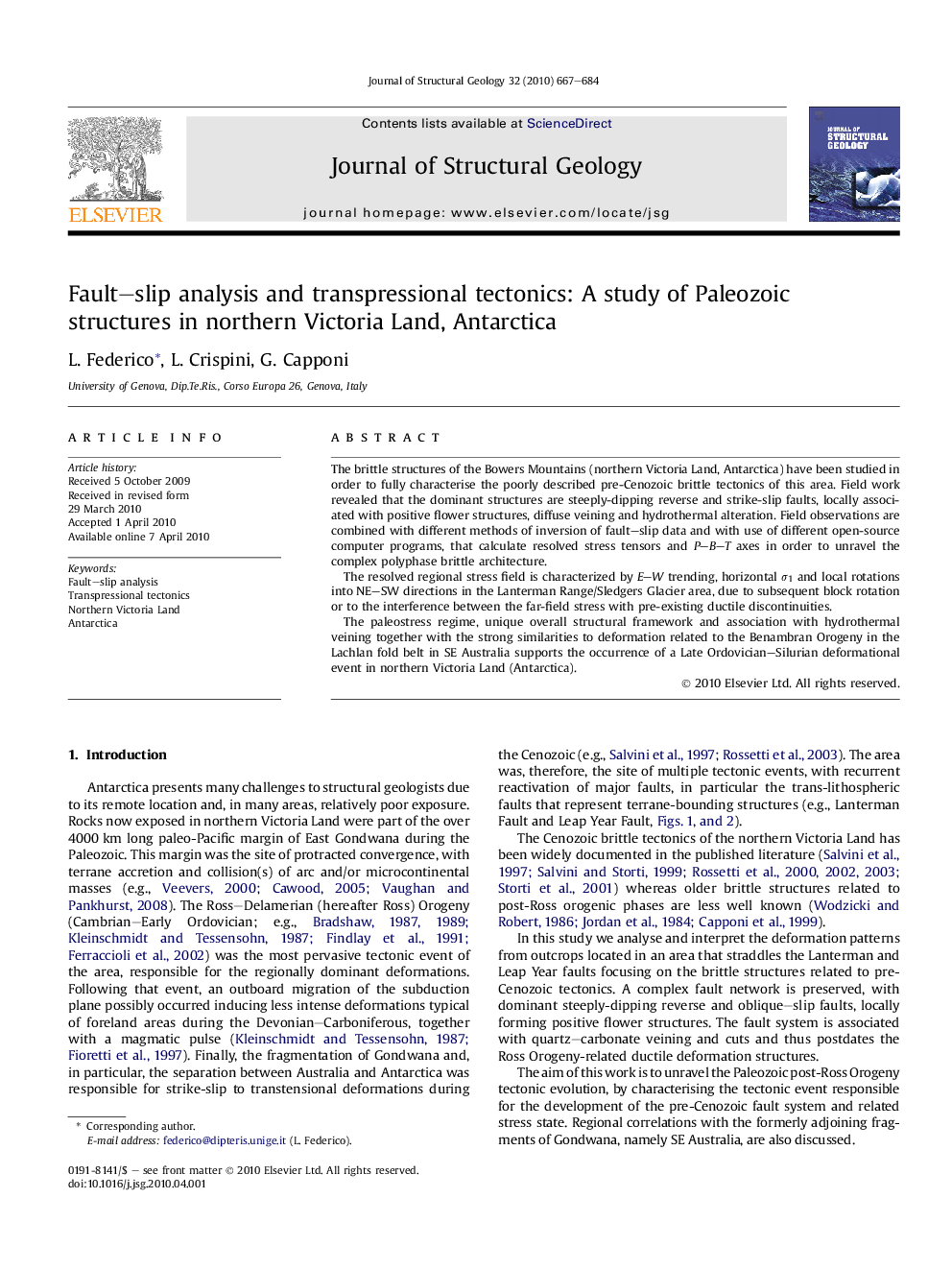| Article ID | Journal | Published Year | Pages | File Type |
|---|---|---|---|---|
| 4733534 | Journal of Structural Geology | 2010 | 18 Pages |
The brittle structures of the Bowers Mountains (northern Victoria Land, Antarctica) have been studied in order to fully characterise the poorly described pre-Cenozoic brittle tectonics of this area. Field work revealed that the dominant structures are steeply-dipping reverse and strike-slip faults, locally associated with positive flower structures, diffuse veining and hydrothermal alteration. Field observations are combined with different methods of inversion of fault–slip data and with use of different open-source computer programs, that calculate resolved stress tensors and P–B–T axes in order to unravel the complex polyphase brittle architecture.The resolved regional stress field is characterized by E–W trending, horizontal σ1 and local rotations into NE–SW directions in the Lanterman Range/Sledgers Glacier area, due to subsequent block rotation or to the interference between the far-field stress with pre-existing ductile discontinuities.The paleostress regime, unique overall structural framework and association with hydrothermal veining together with the strong similarities to deformation related to the Benambran Orogeny in the Lachlan fold belt in SE Australia supports the occurrence of a Late Ordovician–Silurian deformational event in northern Victoria Land (Antarctica).
